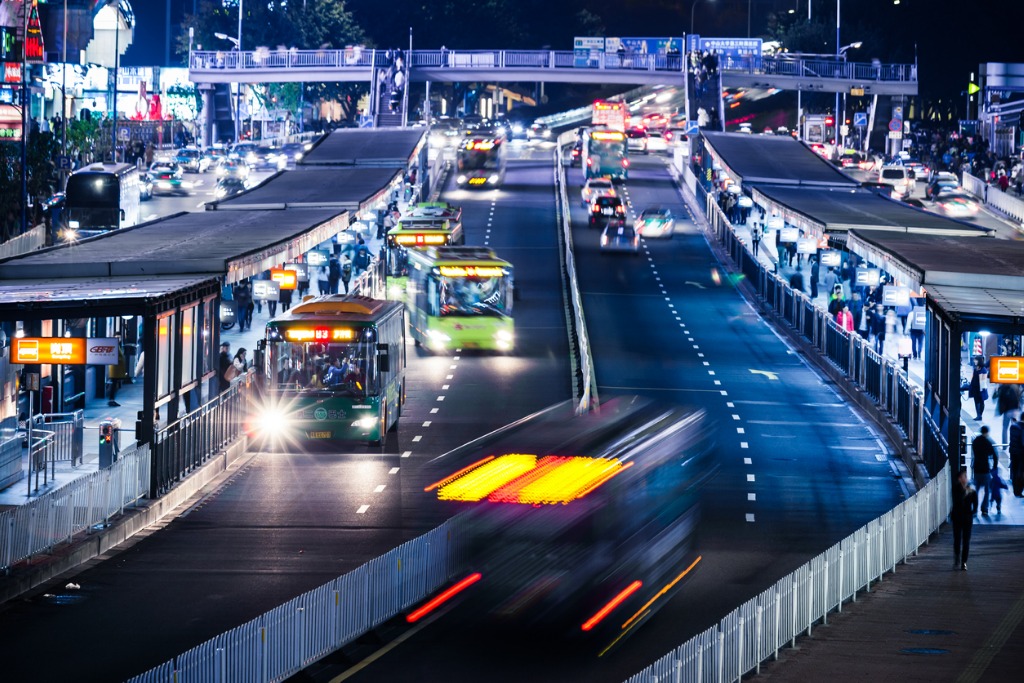
BRTS on the cards in Chennai, but last mile connectivity remains a worry

A 120-km Bus Rapid Transit System (BRTS) in the offing in Chennai is expected to make transportation speedy and effective.
However, with the existing mass transport systems such as Metro and suburban rail, the question of first and last mile connectivity looms large, according to experts.
What BRTS aims to do
Talking to The Federal, Shreya Gadepalli, South Asia programme lead, Institute for Transportation and Development Policy (ITDP), says that BRTS can offer seamless transportation.
ITDP is the technical advisor to the state government for transport and a series of public consultations have been held. A detailed plan report is expected by the end of the year.
As the city’s population crosses 90 lakh, the city needs at least 350 km of quality mass transport system of all kinds.
The BRTS which comprises seven different routes will have dedicated right-of-way, off-board fare collection, platform level boarding and step-less boarding, aimed at fast and high quality transport. The system can ferry as many as 10,000 to 40,000 people per direction in an hour.
“Our recommendations to the state transport department is to ensure that the BRTS complements the existing mass transport systems in the city, including the Metro and suburban rail,” she said.
Currently BRTS is operating in Surat and Ahmedabad in Gujarat and Hubli-Dharwad in Karnataka.
Chennai’s issues similar to rest of India
In Chennai, infrequent buses and lack of an efficient system of small buses have made the modes grossly underutilised.
Take any metro city, the quality and efficiecy of transport is a huge challenge, says Kumar Manish, founder of Urban Voices dedicated to urban mobility.
“People turn to private transport also for want of safety and car gives them that kind of safety,” he said. Another point he mentioned was the need for a quality option for users to switch from private to public transport. “The BRTS could be Metro on the road and is feasible,” he says.
The BRTS project will cost an estimated ₹20 crore per km, whereas an elevated Metro would cost ₹250-300 crore per km, and an underground Metro would cost around ₹500-550 crore per km.
‘BRTS alone won’t help’
A transport expert on condition of anonymity said that a well-planned well-executed BRTS system can replace several private vehicles on the road.
“Any kind of mass transport system is better than a horde of private vehicles. A bus fully occupied can also offer an effective solution to our health woes caused due to spiralling pollution by vehicles,” said the expert.
The failure of BRTS in cities like Delhi has to be seen as an isolated case. “They were just glorified buses without any special efforts taken to address other issues,” the expert said.
ITDP says that several features have been factored in the proposed BRTS system. “A special fleet of buses without steps that reduces boarding and alighting time and which also ensures a better frequency is planned. Ticketing systems outside the buses have also been planned to make it an efficient bus system,” says Shreya.
Integration with other modes key
The BRT system in Ahmedabad which took off in 2009 has more than 1 lakh passengers availing it every day.
However, to provide it a boost, the services are being integrated with the operations of the Ahmedabad Municipal Transport Services.
Kumar Manish says that there are very few examples of a robust transport system, such as Rajkot BRTS. He also observes that among big metros, Bengaluru alone has a strong fleet of buses of all categories.
“However, in all our cities, first and last mile connectivity have remained challenges. Transport is easily accessible with strategic boarding points in just a gap of a few metres,” he added.
The BRTS proposed in Chennai also suggests integrated fare with the Metro services. “The integrated traffic management system on the cards emphasising on last mile connectivity hopes to offer a solution,” said a source from the Chennai Metro Development Authority.


